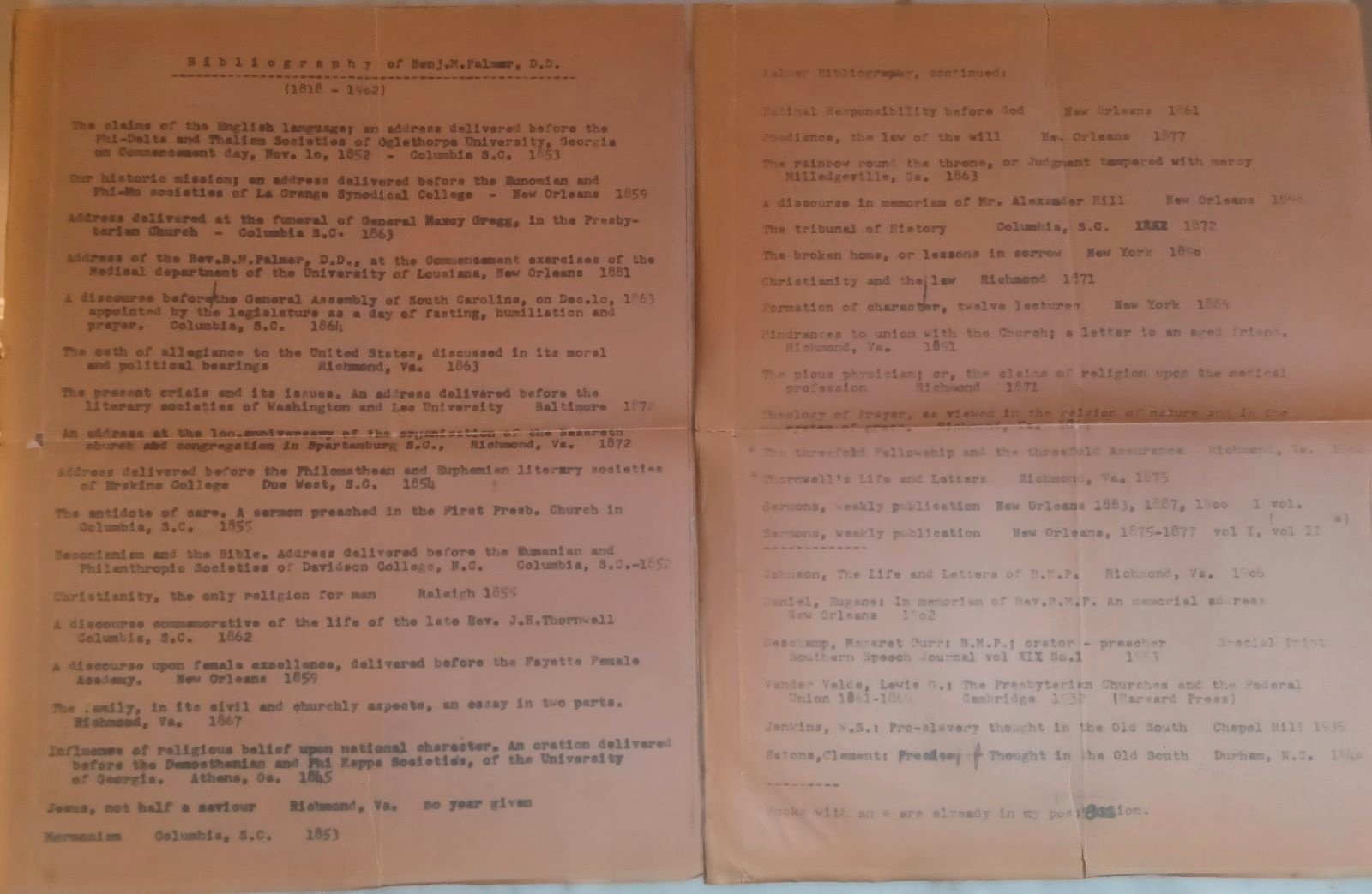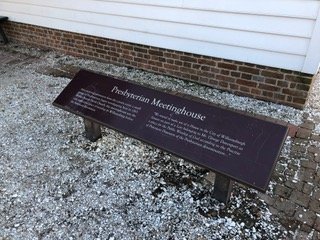Receive our blog posts in your email by filling out the form at the bottom of this page.
In December 1851, Robert Jefferson Breckinridge was very ill. So much so that, when he was requested by friends to address an important theological-practical issue in the church he willingly did so, while recognizing that it might be his last contribution to the church. He deemed the particular issue worthy to take up the final strokes of his pen. As a matter of fact, Breckinridge would live for another two decades, but in this matter he left on record a very powerful protest against the use of instrumental music in the stated public worship of God.
Breckinridge’s testimony against musical instruments in worship led, he says, to him being excluded from some pulpits and also to him being reviled in some cases. For him, though, it was a matter of conscience — respecting fidelity to God’s Word and his ecclesiastical standards — to maintain this position in the face of opposition from some among his brethren. It was at the request of other brethren who were dealing with the question of organs being brought into their own congregations that Breckinridge prepared his 11-point statement.
This article is dated December 30, 1851. According to Thomas E. Peck — who interacted with it in General Principles Touching the Worship of God (1855) — Breckinridge’s article was first published the Presbyterian Herald (Danville, Kentucky) and then reprinted in Baltimore three years later. On Log College Press, we currently have two editions of Breckinridge’s paper: 1) a reprint from the February 1853 issue of The Covenanter, edited by James M. Willson; and 2) an 1856 reprint published in Liverpool, England. The former includes a concluding paragraph that is lacking in the latter.
Breckinridge makes clear in his paper that he is not arguing against the use of musical instruments outside of public worship on the Lord’s Day. He is only addressing the ecclesiastical use of musical instruments as an accompaniment to praise that is sung in worship. He also makes clear in his article that his intended audience is that of the Presbyterian community. It is not a paper written to address all objections to a cappella worship, but only those main objections or concerns that have been voiced by Presbyterians. Key to his argument is a “fundamental” principle [one that we know today by the term “regulative principle of worship”], which, in his words, “[rejects] every human addition to God’s word, God’s ordinances, and God’s worship.”
If something substantial is introduced into the worship of God, Breckinridge argues, positive Scriptural warrant that such a change is necessary — and not merely warrant that it is indifferent — is required.
Persons who seek, openly or covertly, to undermine or to corrupt the faith or practice of our church, founded upon that grand principle, as, for example, by the introduction of instrumental music into our churches, ought to be able to show much more than that such practices are indifferent. They ought to be able to show that they are necessary; for, if they are only indifferent, the positive, general, and long continued settlement of the sense, feelings, and faith of the church against them are reasons enough why offensive attempts should not be made to change the order of our worship, merely to bring in things indifferent; especially when thereby divisions, alienations, and strifes, and at last schism may be the result.
According to Breckinridge, the primary arguments against the introduction of musical instruments into public Christian worship are that it is contrary to God’s commanded ordinances of worship, and it is contrary to the standards of the Presbyterian Church. In numerating the ordinances of public worship commanded by God in the Christian era, and sanctioned by the Westminster formularies, we find reading and preaching of the Word of God, prayer, praise by singing, and benedictions. In opposition to this, Breckinridge highlight the Church of Rome’s efforts to suppress, corrupt and add to every one of these ordinances. Specifically, he points to the use of the organ in worship as a corruption of the ordinance of praise whereby the mechanical tends to the supplant the vocal and spiritual aspects of the ordinance.
Here, then, is the outline of the argument in its simplest form: The use of instrumental music, of any sort, in the stated public worship of God in Presbyterian congregations is, 1st, contrary to the ancient and settled character and habits of Reformed Christians, and especially of those holding the formularies of the Westminster Assembly, and involves defections and changes most deplorable to them: 2d, It is contrary to the covenanted standards of the Presbyterian Church in the United States of America, both in the general principles and spirit, and the particular definitions and provisions thereof, and involves a breach of covenant: 3d, It is contrary to the revealed will of God, as exhibited in the positive institutions for his public worship set up by himself; and involves rebellion against his divine authority.
He goes on to spend some time discussing the Jewish usage of musical instruments on extraordinary occasions related to the Temple, and denies that they made up part of the regular Temple worship, much less the worship performed in the synagogue. But as this aspect of their worship, to the extent that it took place, was ceremonial in nature, and as Christian worship is based on that which is moral and not ceremonial, Breckinridge warns against any attempt to return to the ceremonial form of worship that has been abrogated. He emphasizes that we ought to look to the New Testament for instruction on how Christians should worship, and in the New Testament there is no warrant for the use of musical instruments in public worship by Christians.
The important place which Breckinridge occupies in the history of the American Presbyterian church, and the importance of the particular question he addresses here makes this paper very much worthy of study by the serious Christian. Note that the fuller edition is the 1853 edition from The Covenanter (see also the editorial comments by Willson, which show that not everything Breckinridge says would be endorsed by this representative leader of the Reformed Presbyterian Church of North America, a denomination known for its a cappella worship). Both editions found on Log College Press are quite brief, as is, of course, the summary of Breckinridge’s position given above. His name is cited, though not this paper in particular, by John L. Girardeau in his own masterful treatise, Instrumental Music in the Public Worship of God (1888). See this writer’s paper from the Log College Review for a further look into historic Southern Presbyterian views on a cappella worship. Breckinridge’s 19th century Protest merits consideration by 21st century Christians today.


































